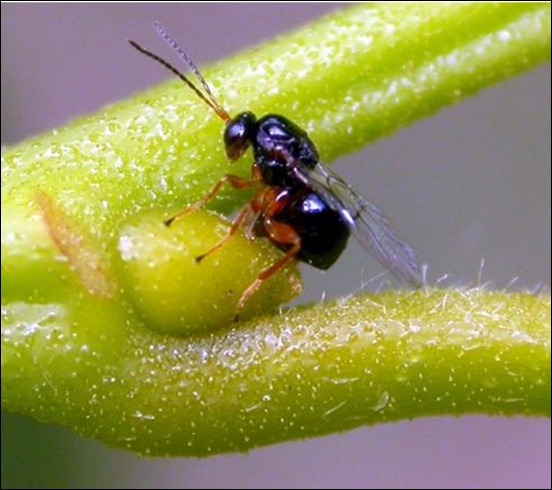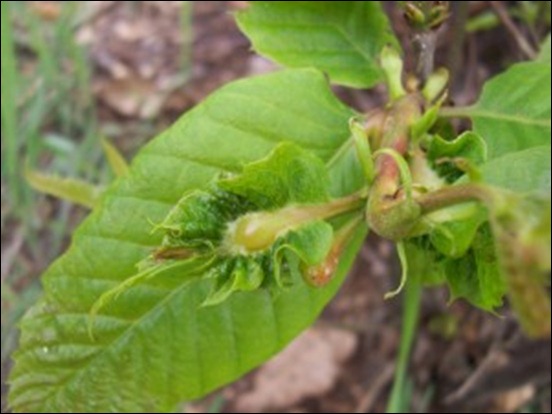La Vespa Killer Posted by Serena on Sep 23, 2011 in Uncategorized
No, it’s not an assassin who rides a scooter but a Chinese wasp that is causing widespread destruction to the Italian chestnut woods. Here is an excerpt from a recent newspaper article:
Una vespa killer cinese distrugge i castagneti. Ora sta arrivando il suo parassita antagonista. Si chiama ‘Dryocosmus Kuriphilus’, ma nei boschi della Lunigiana è conosciuto come la vespa killer colpevole della moria dei castagni.
A Chinese killer wasp is destroying the chestnut woods. Now its parasitic opponent is coming. It’s called ‘Dryocosmus Kuriphilus’, but in the woodlands of Lunigiana it’s known as the killer wasp, responsible for the blight of the chestnuts.
L’insetto sta infestando i castagneti e si sta diffondendo a macchia d’olio: i danni sono già elevatissimi, gli agricoltori lanciano l’allarme e chiedono aiuto alle istituzioni. Proveniente dalla Cina, è stato segnalato per la prima volta in Italia nel 2002 in provincia di Cuneo (Piemonte) e poi si è diffuso in altre regioni e dal 2008 anche nei boschi toscani.
The insect is infesting chestnut woods and is spreading like wildfire: the damage is already very serious, agriculturalists have raised the alarm and are asking for help from the authorities. Originating in China, it was first reported in Italy in 2002 in the province of Cuneo (Piedmont) from which it spread to other regions including, from 2008, the woodlands of Toscana.
La vespa cinese determina un rilevante calo della fruttificazione del castagno e forti riduzioni dell’accrescimento della massa legnosa. Quando l’insetto depone le uova induce la formazione di rigonfiamenti (galle) che inglobano foglie e infiorescenze riducendo la fruttificazione. Si calcola una perdita del 70 per cento dei frutti.
The Chinese wasp causes a significant decline in the chestnuts ability to produce fruit and a severe reduction in the formation of the timber. When the insect lays its eggs it induces the formation of swellings, known as galls, which cover leaves and buds thereby reducing the production of fruit by an estimated 70%.
Come combattere il killer? C’è già pronto l’antagonista. Il suo nome è ‘Torymus sinensis’, parassita delle larve della vespa cinese che viene liberato sulle galle dei castagni malati.
How can the killer be fought? There is an opponent ready, its name is ‘Torymus sinensis’, and it’s a parasite which is set free on the galls of the infected chestnut trees to feed on the larvae of the Chinese wasp.
“L’arrivo dell’infestazione in tutta la Lunigiana – commenta il presidente della Comunità Montana Paolo Bissoli – è un evento grave ma non inatteso: il cinipede è arrivato dall’Estremo Oriente ed è un elemento estraneo al nostro ecosistema. L’unica cura è l’immissione sul territorio del suo antagonista naturale. Stiamo lavorando proprio in questa direzione in un piano di coordinamento fra Regione, Province e Comunità Montane, associazioni di coltivatori e castanicoltori”.
“The arrival of this infestation in the whole of Lunigiana – says the president of the Comunità Montana, Paolo Bissoli, – is a serious, but not unexpected event: the gall wasp arrived from the Far East and is an element foreign to our ecosystem. The only remedy is to release its natural opponent into the area. We are working precisely in this direction with a coordinated plan which encompasses region, provinces, Comunità Montane (organisations responsible for the care of mountain areas), agricultural associations, and chestnut growers”.
You can read more about the infestation of the Chinese killer wasp and its impact on the Italian landscape in this article: http://www.giornaledibarganews.com

Build vocabulary, practice pronunciation, and more with Transparent Language Online. Available anytime, anywhere, on any device.






Leave a comment: